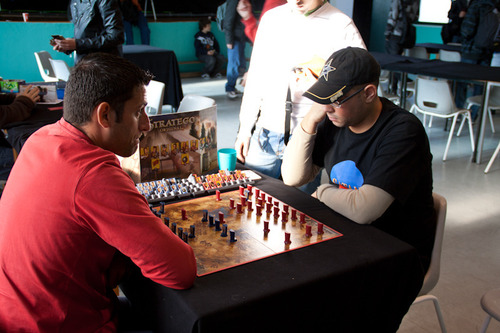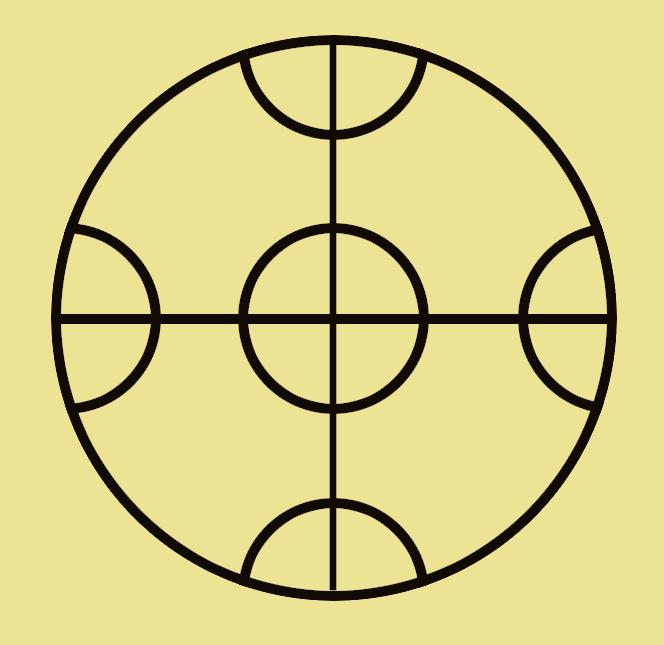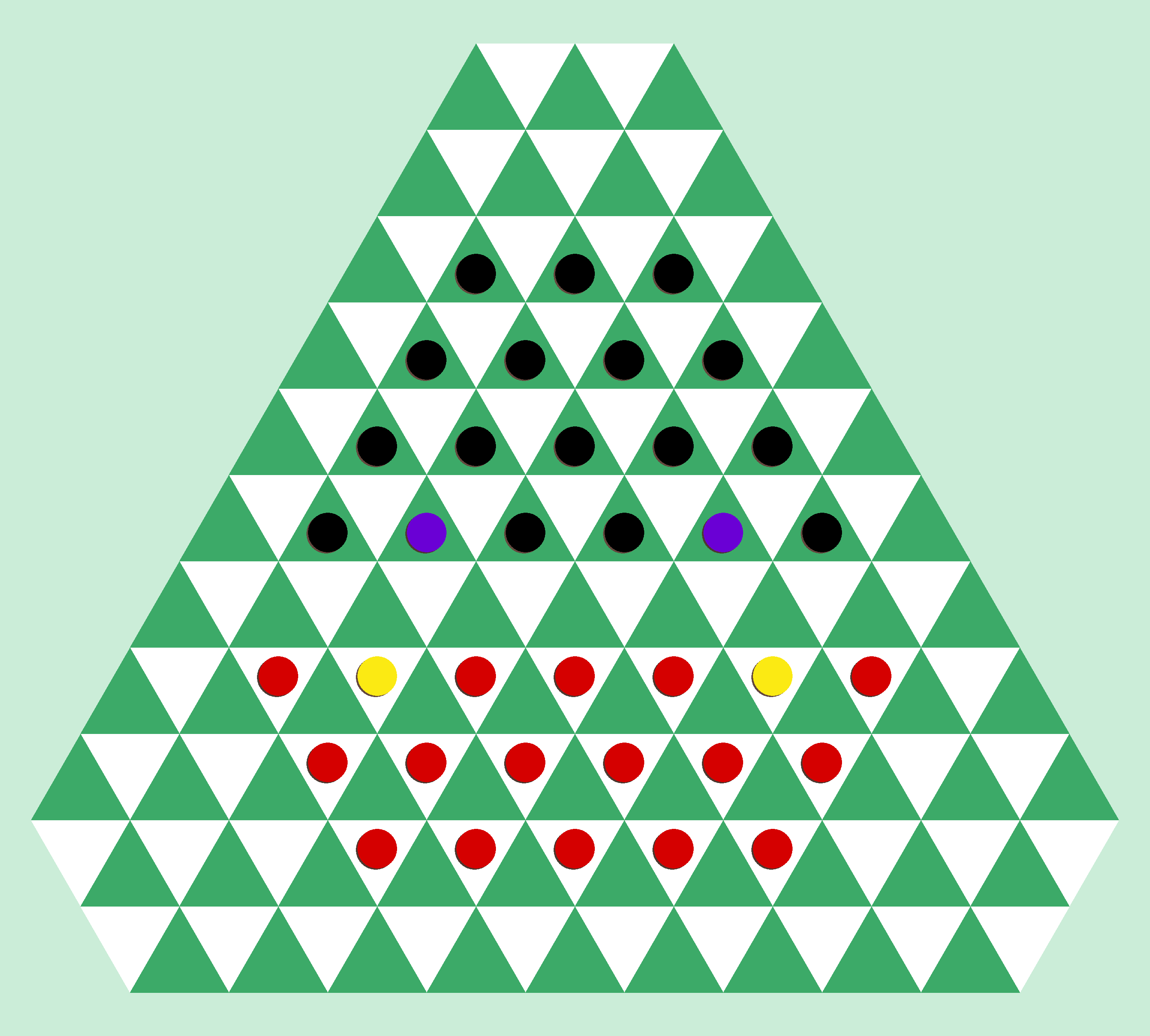|
Mak-yek
Mak-yek (, ) is a two-player abstract strategy board game played in Thailand and Myanmar. Players move their pieces as in the rook in chess and attempt to capture their opponent's pieces through custodian and intervention capture. The game may have been first described in literature by Captain James Low a writing contributor in the 1839 work ''Asiatic Researches; or, Transactions of the Society, Instituted in Bengal, For Inquiring into The History, The Antiquities, The Arts and Sciences, and Literature of Asian, Second Part of the Twentieth Volume'' in which he wrote chapter X ''On Siamese Literature'' and documented the game as Maak yék. Another early description of the game is by H.J.R. Murray in his 1913 work ''A History of Chess'', and the game was written as Maak-yek.see footnote 15 on page 114 of "A History of Chess"(1913) by H.J.R. Murray. Setup The game is played on an 8 by 8 square board by two players each having a set of sixteen pieces or "men", and with each se ... [...More Info...] [...Related Items...] OR: [Wikipedia] [Google] [Baidu] |
Abstract Strategy Game
An abstract strategy game is a type of strategy game that has minimal or no narrative theme, an outcome determined only by player choice (with minimal or no randomness), and in which each player has perfect information about the game. For example, Go is a pure abstract strategy game since it fulfills all three criteria; chess and related games are nearly so but feature a recognizable theme of ancient warfare; and Stratego is borderline since it is deterministic, loosely based on 19th-century Napoleonic warfare, and features concealed information. Definition Combinatorial games have no randomizers such as dice, no simultaneous movement, nor hidden information. Some games that do have these elements are sometimes classified as abstract strategy games. (Games such as '' Continuo'', Octiles, '' Can't Stop'', and Sequence, could be considered abstract strategy games, despite having a luck or bluffing element.) A smaller category of abstract strategy games manages to incorporate hidde ... [...More Info...] [...Related Items...] OR: [Wikipedia] [Google] [Baidu] |
Sulawesi
Sulawesi ( ), also known as Celebes ( ), is an island in Indonesia. One of the four Greater Sunda Islands, and the List of islands by area, world's 11th-largest island, it is situated east of Borneo, west of the Maluku Islands, and south of Mindanao and the Sulu Archipelago. Within Indonesia, only Sumatra, Borneo, and New Guinea, Papua are larger in territory, and only Java and Sumatra are more populous. The landmass of Sulawesi includes four peninsulas: the northern Minahasa Peninsula, the East Peninsula, Sulawesi, East Peninsula, the South Peninsula, Sulawesi, South Peninsula, and the Southeast Peninsula, Sulawesi, Southeast Peninsula. Three gulfs separate these peninsulas: the Gulf of Tomini between the northern Minahasa and East peninsulas, the Tolo Gulf between the East and Southeast peninsulas, and the Bone Gulf between the South and Southeast peninsulas. The Strait of Makassar runs along the western side of the island and separates the island from Borneo. Etymology The n ... [...More Info...] [...Related Items...] OR: [Wikipedia] [Google] [Baidu] |
Traditional Board Games
A tradition is a system of beliefs or behaviors (folk custom) passed down within a group of people or society with symbolic meaning or special significance with origins in the past. A component of cultural expressions and folklore, common examples include holidays or impractical but socially meaningful clothes (like court dress, lawyers' wigs or military officers' spurs), but the idea has also been applied to social norms and behaviors such as greetings, etc. Traditions can persist and evolve for thousands of years— the word ''tradition'' itself derives from the Latin word ''tradere'' literally meaning to transmit, to hand over, to give for safekeeping. While it is reportedly assumed that traditions have an ancient history, many traditions have been invented on purpose, whether it be political or cultural, over short periods of time. Various academic disciplines also use the word in a variety of ways. The phrase "according to tradition" or "by tradition" usually means that wh ... [...More Info...] [...Related Items...] OR: [Wikipedia] [Google] [Baidu] |
Abstract Strategy Games
Abstract may refer to: *"Abstract", a 2017 episode of the animated television series ''Adventure Time (season 9)#ep262, Adventure Time'' * Abstract (album), ''Abstract'' (album), 1962 album by Joe Harriott * Abstract algebra, sets with specific operations acting on their elements * Abstract of title, a summary of the documents affecting the title to a parcel of land * Abstract (law), a summary of a legal document * Abstract (summary), in academic publishing * Abstract art, artistic works that do not attempt to represent reality or concrete subjects * ''Abstract: The Art of Design'', 2017 Netflix documentary series * Abstract music, music that is non-representational * Abstract object in philosophy * Abstract structure in mathematics * Abstract type in computer science * The property of an abstraction * Q-Tip (musician), also known as "The Abstract" * Abstract and concrete * Hydrogen atom abstraction, in chemistry See also * Abstraction (other) {{Disambiguation ... [...More Info...] [...Related Items...] OR: [Wikipedia] [Google] [Baidu] |
Fox Games
Fox games are a category of asymmetric board games for two players, where one player (the fox) attempts to catch the opponent's pieces (typically geese or sheep), while that player moves their pieces to either trap the fox or reach a destination on the board. In one variant, fox and hounds, a single fox tries to evade the other player's hounds. The game is known by many names around the world, including ''Fox and geese'' in Britain, ''Renard et les poules'' in France, ''Lupo e pecore'' in Italy, ''Fuchs und Gänse'' (or ''Fuchs und Henne'') in Germany, ''Schaap en wolf'' in the Netherlands, ''riebantablu'' in Sápmi, ''Rävspel'' in Sweden, ''Refskák'' in Iceland, ''Ratón y gatos'' in Spain, ''Lis i gęsi'' in Poland, ''Vlci a ovce'' in Slovakia, ''Volk i ovtsy'' in Russia and '' Bagh-chal'' in Nepal. History The game ''Halatafl'' is known from at least as early as the 14th century, and it is mentioned in Grettis saga. It probably originated in Scandinavia, as a variant of Ta ... [...More Info...] [...Related Items...] OR: [Wikipedia] [Google] [Baidu] |
Reversi
Reversi is a strategy board game for two players, played on an 8×8 uncheckered board. It was invented in 1883. ''Othello'', a variant with a fixed initial setup of the board, was patented in 1971. Basics Two players compete, using 64 identical game pieces ("disks") that are light on one side and dark on the other. Each player chooses one color to use throughout the game. Players take turns placing one disk on an empty square, with their assigned color facing up. After a play is made, any disks of the opponent's color that lie in a straight line bounded by the one just played and another one in the current player's color are turned over. When all playable empty squares are filled, the player with more disks showing in their own color wins the game. History Original version Englishmen Lewis Waterman and John W. Mollett both claim to have invented the game of reversi in 1883, each denouncing the other as a fraud. The game gained considerable popularity in England at the e ... [...More Info...] [...Related Items...] OR: [Wikipedia] [Google] [Baidu] |
Watermelon Chess
Watermelon chess is a two-player abstract strategy game from China where it is known as ''xi gua qi''. It is also known as the surround game and globe. Played on a network of curved lines, players take turns to move a piece, capturing the opponent's pieces by surrounding them. The game is related to the bear games of the ancient Romans, and uses the same board as some of them. The Go (game), Go variant sz'kwa uses the same board. Watermelon chess is a pebble game similar to Go , though unrelated to the game of chess. Equipment The board is composed of a large circle with an inner middle circle. Four semicircles form a north, south, east, and west arrangement in the interior of the larger circle. The large circle and the smaller middle circle are divided equally into four pie slices. This creates for twenty-one intersection points where the pieces are played upon. Each player has six pieces. One player plays the black pieces, and the other player plays the white pieces, ... [...More Info...] [...Related Items...] OR: [Wikipedia] [Google] [Baidu] |
Bizingo
Bizingo is a two-player strategy board game A board game is a type of tabletop game that involves small objects () that are placed and moved in particular ways on a specially designed patterned game board, potentially including other components, e.g. dice. The earliest known uses of the ... created sometime in the 1850s in the United States. Two opposing armies on a triangular grid face off against one another. The game seems unrelated to any other, except perhaps to the traditional Zuni game Awithlaknakwe. Setup The board is in the shape of an equilateral triangle with truncated corners. It contains 157 triangular in an alternating color pattern; 75 cells are light-colored, 82 are dark-colored. Each player has 18 pieces in their own color: 16 regular pieces and 2 ''captains''. Because the board is triangular, the two armies are set up asymmetrically (see illustration). One player sets their pieces near a base of the triangle on light-colored cells in three rows: seven pie ... [...More Info...] [...Related Items...] OR: [Wikipedia] [Google] [Baidu] |
Awithlaknakwe
Awithlaknakwe (also known as stone warriors, or game of the stone warriors) is a strategy board game from the Zuni Native American Indians of the American Southwest. The board contains 168 squares with diagonal grids. Two or four may play, with players identified as North, West, South, and East. The game was described by Stewart Culin in his book ''Games of the North American Indians'' (1907). Equipment The gameboard is a 12×12 square grid with six extra squares centered on each of the four sides, totaling 168 squares. Diagonal lines run through each square (the diagonal lines are called ''trails''; the orthogonal lines are called ''canyons''). Each player has six ''warriors'', and a seventh piece not yet called the ''priest of the bow''. The historical board was cut into stone slabs, and pieces were small discs of pottery with tops either plain or having a hole in their centers to differentiate ownership. The priest of the bow was distinguished from friendly pieces by being ... [...More Info...] [...Related Items...] OR: [Wikipedia] [Google] [Baidu] |
Agon (game)
Agon (or queen's guards or royal guards) is a Abstract strategy game, strategy game invented by Anthony Peacock of London, and first published in 1842. It is a two-player game played on a 6×6×6 hexagonal gameboard, and is notable for being the oldest known board game played on a board of hexagonal cells. Rules Each player has one ''queen'' and six ''guards''. Players determine who moves first, then turns alternate. On each turn, a player moves one of his pieces. The object of the game is to be first to maneuver one's queen to the central hex (the ''throne'') at the center of the board, and surround her with all six of her guards. Moves The gameboard may be thought of as a series of concentric rings of hex cells (highlighted by rings of alternating colors). Pieces move one step at a time to an adjacent cell, either sideways in the same ring, or towards the throne to the next ring. The cell moved to must be vacant. Only the queen may move to the throne. Captures A piece is capt ... [...More Info...] [...Related Items...] OR: [Wikipedia] [Google] [Baidu] |
Tafl Games
Tafl games (), also known as hnefatafl games, are a family of ancient Northern European strategy board games played on a checkered or latticed gameboard with two armies of uneven numbers. Names of different variants of tafl include hnefatafl, tablut, tawlbwrdd, brandubh, Ard Rí, and alea evangelii. Games in the tafl family were played in Norway, Sweden, Denmark, Iceland, Britain, Ireland, and Sápmi. Tafl gaming was eventually supplanted by chess in the 12th century, Murray 1951, pp. 56–57. but the tafl variant of the Sámi people, tablut, was in play until at least the 18th century. The rules for tablut were written down by the Swedish naturalist Linnaeus in 1732, and these were translated from Latin to English in 1811. All modern tafl games are based on the 1811 translation, which had many errors. New rules were added to amend the issues resulting from these errors, leading to the creation of a modern family of tafl games. In addition, tablut is now also played ... [...More Info...] [...Related Items...] OR: [Wikipedia] [Google] [Baidu] |
Hunting
Hunting is the Human activity, human practice of seeking, pursuing, capturing, and killing wildlife or feral animals. The most common reasons for humans to hunt are to obtain the animal's body for meat and useful animal products (fur/hide (skin), hide, bone/tusks, horn (anatomy), horn/antler, etc.), for recreation/taxidermy (see trophy hunting), although it may also be done for resourceful reasons such as removing predators dangerous to humans or domestic animals (e.g. wolf hunting), to pest control, eliminate pest (organism), pests and nuisance animals that damage crops/livestock/poultry or zoonosis, spread diseases (see varmint hunting, varminting), for trade/tourism (see safari), or for conservation biology, ecological conservation against overpopulation and invasive species (commonly called a culling#Wildlife, cull). Recreationally hunted species are generally referred to as the ''game (food), game'', and are usually mammals and birds. A person participating in a hunt is a ... [...More Info...] [...Related Items...] OR: [Wikipedia] [Google] [Baidu] |






